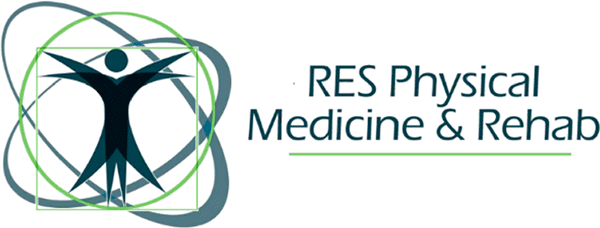Prolotherapy in Buffalo, New York
Call todayRepair Damaged Tendons and Ligaments
Our experienced Buffalo Doctors use Prolotherapy to repair damaged tendons and ligaments and eliminate chronic pain. Prolotherapy involves injecting a solution into a joint, ligament, or tendon to relieve this chronic pain. Other physicians may use methods that are not entirely effective or safe, but here at RES Physical Medicine & Rehab in Buffalo, NY, we only use the most expert prolotherapy methods taught and promoted by the Hackett Hemwall Patterson Foundation.
As expert Prolotherapy Doctors, our methods are effective in treating back pain, headaches, migraines, sports injuries, fibromyalgia, bursitis, tendonitis, loose joints, scoliosis pain, sciatica, TMJD, and much more. Advances are being made every day, and because our prolotherapy treatments resolve the underlying cause of pain, patients may begin to notice pain relief after just one treatment.
If you are suffering from chronic pain and loss of mobility, schedule an appointment with our Expert Prolotherapy Doctors.
WHAT IS PROLOTHERAPY?
Prolotherapy involves injecting a solution into a joint, ligament, or tendon, which then induces your own body to repair itself. You can actually repair, remake, and re-strengthen your tendons and ligaments with prolotherapy, as well as relieve chronic pain.
HOW DOES PROLOTHERAPY WORK?
By introducing a benign substance into joints, tendons, and ligaments, prolotherapy induces an inflammatory reaction which actually causes the connective tissue to strengthen itself. In doing so, it is possible with prolotherapy to have stronger tendons and ligaments than you had before your sports injury or car accident.
HOW LONG DOES PROLOTHERAPY TAKE TO WORK?
Depending on the person and the body part affected, Prolotherapy can take different amounts of treatment to be effective. For instance, if you injure a smaller area of the body, that may take less time to heal than larger areas. If you injure your ankle, your foot, your wrist, your elbow, or even the shoulder, it will take less time to heal than a spinal injury, for example.
IS PROLOTHERAPY PAINFUL?
Patients often worry about the pain they’re going to have, but we use local anesthetics so it’s not as painful as one might think.
Prolotherapy does involve multiple injections around the injured site, however, so the more you are injured the more uncomfortable it may be. As you heal, the pain will be less and less.
After treatment, some patients do experience stiffness and there is some soreness at the sites of injection for approximately two days. This is generally not severe and individuals can usually resume their activities as usual within the next day.
IS TIMING IMPORTANT WITH PROLOTHERAPY TREATMENTS?
The timing of having the prolotherapy is important. The longer that you wait and allow your body to scar, the longer it will take for prolotherapy to work. The sooner you have prolotherapy done, the faster and and more effective the healing process.
HOW LONG DOES ONE PROLOTHERAPY TREATMENT TAKE?
A typical prolotherapy session takes approximately 10 minutes. There is a short recovery time in the office before you leave, about 15 minutes. Afterwards, most patients like to go home and rest. Many individuals notice that their pain is gone after their treatment.
HOW FREQUENTLY DO YOU NEED PROLOTHERAPY?
Generally, you receive prolotherapy treatments every two to four weeks. Some individuals who have both neck and low back injuries generally alternate treatments between the two injured sites every two weeks until they get the desired benefit.
HOW LONG DO I HAVE TO GO TO PROLOTHERAPY?
The duration of the prolotherapy treatments varies from body part to body part. That being said, generally we see some results after just one treatment and excellent results in as little as three months.
PROLOTHERAPY SIDE EFFECTS?
Side effects due to prolotherapy sessions are not very common. Possible side effects include dizziness and nausea. These issues resolve quickly though, approximately 15 to 20 minutes after the procedure. The majority of people do not have any side effects.
WILL YOU POKE MY SPINAL CORD DIRECTLY FOR PROLOTHERAPY TREATMENTS?
With spinal cord injuries, the prolotherapy injections occur along the side where the ligaments attach to the spinal column and are nowhere near the inside where the actual spinal cord sits.
Schedule your appointment and begin your road to recovery
